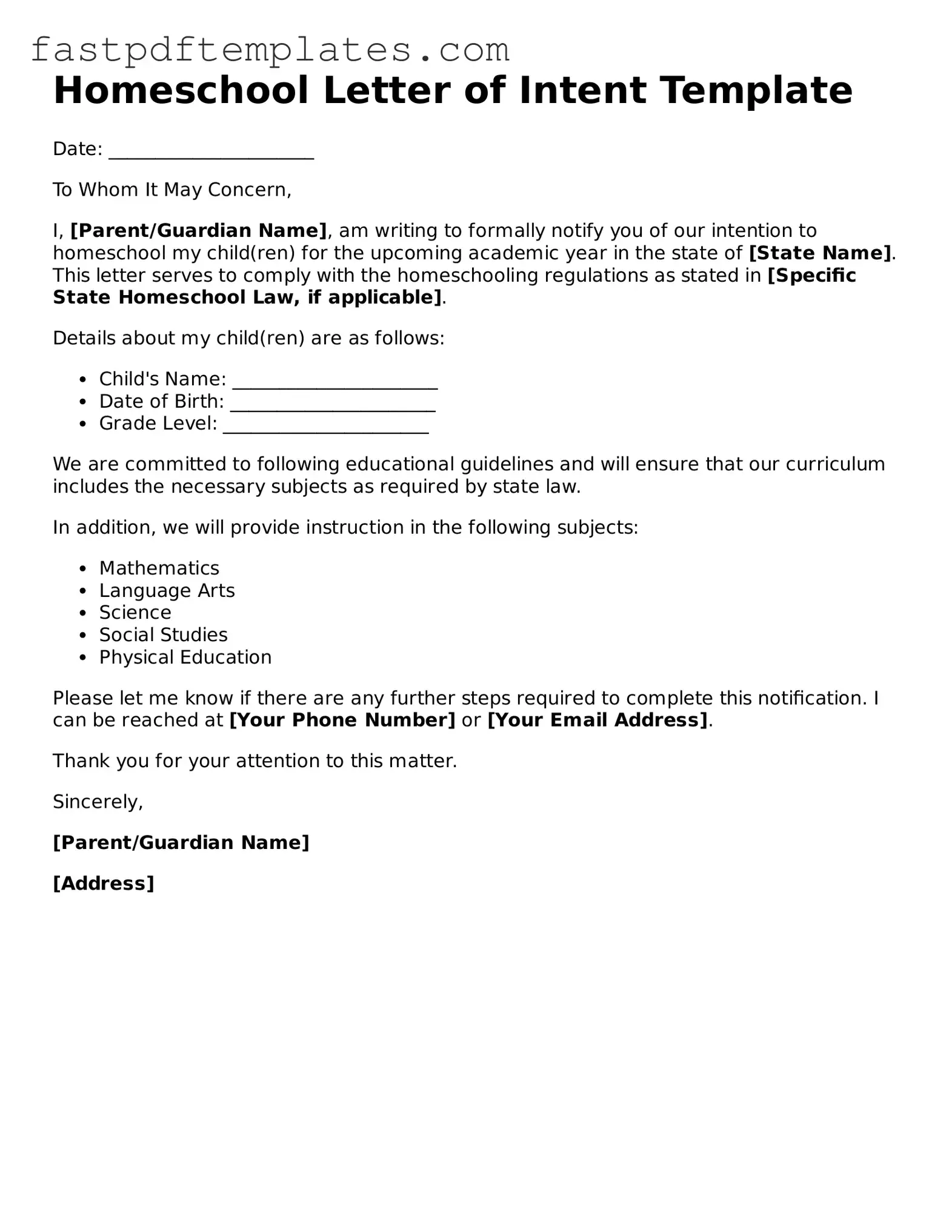The Homeschool Letter of Intent is similar to the Affidavit of Intent to Homeschool. Both documents serve as formal notifications to the school district that a parent or guardian intends to educate their child at home. The Affidavit often requires a notarized signature, adding an extra layer of legal acknowledgment. This document typically outlines the educational philosophy and curriculum plan, much like the Letter of Intent, ensuring that the educational approach is clearly communicated to the authorities.
Another document that shares similarities is the Notice of Intent. This document is commonly used in various states to inform local education authorities about a family's decision to homeschool. It typically includes basic information about the student and the educational plan. Like the Homeschool Letter of Intent, it serves as a formal declaration, helping to establish a record of the family's intent to provide an alternative form of education.
The Individualized Education Program (IEP) can also be compared to the Homeschool Letter of Intent. While an IEP is specific to students with disabilities and outlines tailored educational goals, it similarly requires parents to communicate their educational plans. Both documents emphasize the importance of a structured approach to education, ensuring that the needs of the student are met, whether in a traditional school setting or at home.
The Curriculum Plan is another document that resembles the Homeschool Letter of Intent. This plan details the subjects and materials that will be used throughout the academic year. While the Letter of Intent indicates the intent to homeschool, the Curriculum Plan provides the specifics of how that intent will be realized. Both documents work together to ensure that educational standards are maintained and that the student receives a comprehensive education.
The Enrollment Form for Private Schools can also be likened to the Homeschool Letter of Intent. When families choose to enroll their children in private institutions, they must submit this form to indicate their intention. Similar to the Letter of Intent, it serves as a formal notification to the school, outlining the family's commitment to the educational path they have chosen. Both documents reflect a proactive approach to education and compliance with state regulations.
The Education Plan, often required by certain states, has parallels with the Homeschool Letter of Intent. This document outlines the educational goals and objectives for the school year. While the Letter of Intent announces the intention to homeschool, the Education Plan details how that intention will be executed. Both documents are essential in ensuring that families adhere to educational standards and provide a quality learning experience for their children.
The Withdrawal Form from Public School is also similar. When parents decide to homeschool, they often need to submit this form to formally withdraw their child from the public school system. Like the Homeschool Letter of Intent, it acts as a notification to the school district. Both documents highlight the transition from a traditional educational environment to homeschooling, ensuring that all legal requirements are met.
Lastly, the Statement of Educational Philosophy can be compared to the Homeschool Letter of Intent. This statement outlines the beliefs and values that guide a family's educational choices. While the Letter of Intent communicates the intent to homeschool, the Statement of Educational Philosophy provides insight into the reasoning behind that choice. Both documents emphasize the importance of intentionality in education and help establish a framework for the family's homeschooling journey.
